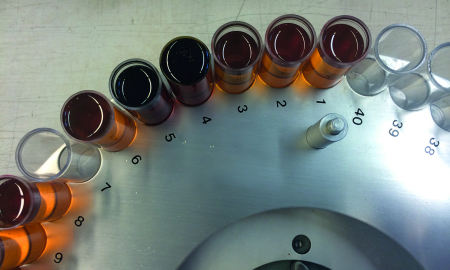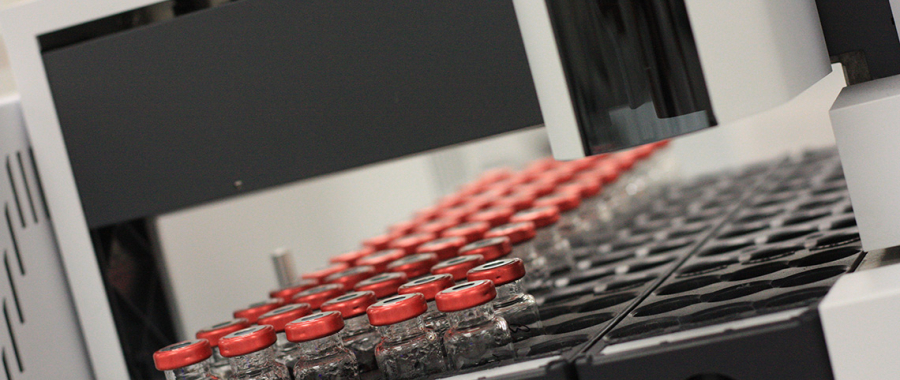Solving Mysteries on the Railways with Chemical Analysis
SOCOTEC’s chemical analysis team regularly helps our rail clients identify unknown materials found on the tracks, in depots or even on board trains.
Unknown substances can be a major cause of concern, often leading to the appearance of mysterious deposits, residue build-up or mechanical failures. Paul Walker, the Sherlock Holmes of the advanced chemistry & research laboratory, reflects on some of the cases he has cracked for the rail industry.
Due to our long association with the railways, SOCOTEC is often approached by our rail clients to identify unknown materials and provide vital information such as the source of the material. This can be for a variety of reasons but health and safety, fire safety and mechanical problems are the most common.
Blocked fuel filters
The blocking of fuel and oil filters within a train engine system can cause fuel and oil starvation to the engine leading to damage or failure. We often receive samples of unknown materials found to be blocking these filters and we have a wealth of experience in investigating the cause.
After extracting the substance from the filter it is washed in petroleum ether to remove fuel and oil residue. The remaining material is then examined with a variety of techniques including optical microscopy, fourier transform infrared spectroscopy (FTIR) and scanning electron microscopy with energy dispersive x-ray analysis (SEM/EDX).
Contaminants most commonly found inside fuel and oil filters include a build-up of wear metals, bacteriological growth, siliceous dust and carbon soot. Identification of the material provides our clients with the information necessary to decide on the most appropriate remedial action.
Railhead swab analysis
Railhead swab analysis is an integral part of keeping the railways safe; allowing the sources of railhead contamination to be identified and remedial action to be taken.
The presence of contamination on railheads can lead to low levels of adhesion between the train wheels and tracks, extending braking distances and therefore causing trains to overrun stations, signals passed at danger (SPAD), shunting incidents and even derailments. Railhead contamination can also lead to loss of train detection, where the contamination acts as an insulating barrier between the train wheels and rail surface, preventing the wheels from operating the track circuit.
Our railhead swab analysis provides information on the presence of contamination such as oils, fuels, greases, sand/sandite and leaf debris. We provide the specialist sampling kits which contain everything required for investigators to take samples from the railheads and associated areas.
After many years in the laboratory, I can usually make an educated guess or an assumption about what a material may be by examining the substance by hand and by sight. A series of specialist chemical analysis tests can then confirm or narrow down my identification. However, some cases are more unusual and require further investigation.
The case of the dirty windows
Although many of our rail cases involve blocked filters and unknown dusts, some projects can be much more intriguing. One such case was the problem of train windows which were covered in an unknown deposit which could not be cleaned off.
A series of photographs were taken by the team of engineers and sent to the laboratory but we were unable to make a characterisation by visual examination alone. The team and I were therefore dispatched to site to investigate further.
The train windows were found to have what appeared to be water droplet markings but unusually, this could not be polished away. In order to carry out a thorough analysis, a window was removed and shipped to the laboratory. Under the microscope the water droplets were found to be a solid material which was firmly adhered to the surface of the glass.
We managed to isolate a very small amount of the deposit for analysis and discovered that it was siliceous in nature but what could it be?
During our site visit we had noticed that there was a concrete manufacturing site directly up wind from the depot wash plant. This was the vital clue. Each time the trains emerged from the carriage wash plant, fine concrete dust was deposited onto the wet windows, binding it to the surface of the glass as the water droplets dried. Mystery solved!
Under the microscope
Despite our extensive chemical analysis library and nearly 20 years of experience, there is no single testing technique which can be carried out to characterise an unknown material, each sample is treated uniquely based on its origins and our clients’ requirements. Look out for my next blog where I will take you behind the scenes in the Advanced Chemistry & Research laboratory to discover more about how we solve our cases…
Are you in need of testing services to identify unknown materials?
SOCOTEC is firmly established as a market leader in examining and identifying unknown contaminants such as solvents, dusts, solids, oils and deposits.






Add new comment